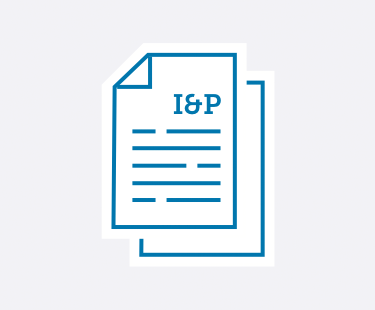

Learn practical strategies to handle emerging trends and leadership challenges in private schools.
No matter if you’re a School Head, Admission Director, Development Director, Board member, or any other private school administrator—Ideas & Perspectives®, ISM’s premier private school publication, has strategic solutions for the pervasive problems you face.
- Tuition not keeping pace with your expenses? In I&P, explore how to use strategic financial planning to create your budget and appropriately adjust your tuition.
- Enrollment dropping off? Discover how to implement the right admission and enrollment management strategies that engage your community—and fill your classrooms.
- Trouble retaining teachers? Learn how you can best support your teachers using ISM’s Comprehensive Faculty Development framework. Your faculty members will become more enthusiastic about their roles—which ultimately improves student outcomes.
- Fundraising campaigns not as successful as you’d hoped? Implement ISM’s practical advice and guidance to build a thriving annual fund, construct an effective capital campaign, and secure major donors—no matter your community size or location.
- Not sure how to provide professional development—for you and your staff? Learn ways to develop and fund a successful professional development strategy. You can improve teacher-centered satisfaction and growth, which in turn strengthens student-centered learning.
- Problematic schedule? You can master the challenges of scheduling with the help of ISM’s practical advice, based on our experience with hundreds of schools and our time-tested theories.
- And so much more.
I&P has shared targeted research, up-to-date insight, and sound theory with school leaders since 1975. More than 8,500 private school decision-makers find the answers to their schools’ administrative and governance matters in our advisory letter. We give you the strategic answers you need.
As an ISM Silver or Gold member, you not only receive issues online and in print 10 times a year, but you have access to 900+ articles in our web archive. Need help? It’s at your fingertips! Learn more and sign up for ISM's membership here.
Search
See the articles from our latest issue of Ideas & Perspectives.
The ISM Stability Markers: Snapshot Scoring
Volume 42 No. 7 // June 8, 2017
The ISM Stability Markers® comprise outcomes of ISM Consultants’ internal studies that periodically address the question: What variables are associated most strongly, according to ISM data, with a private-independent school’s ability to sustain excellence? This article—a snapshot of the larger array—provides readers with a self-scored estimate of the more comprehensive, 18-item set of ISM Stability Markers. This is designed to be used by the School Head, Business Manager, or other senior administrators in developing a preliminary, yet thoroughly data-driven, portrait of your school’s organizational and financial positioning for the long run.
1. Already a member? Click here to login.
2. Not a member? Click here to become a member.
3. Not sure? We'll help you figure it out.
The Donor Cycle
Volume 42 No. 6 // May 8, 2017
The competition for philanthropic gifts, and a donor’s reason for giving, require a more complex and multifaceted balance. Advancement professionals need deeper insights into what motivates donors and prospects to give. Develop effective strategies to engage and bring them closer to your institution. Donors are vital for securing your school’s stability and success, and your relationships with them must be conducted with care and understanding. The Donor Cycle is a strategic approach to moving the donor into a closer relationship to the school. It is a sequence of processes and practices involved in establishing and renewing the connection of donors and their values with the school and its mission.
1. Already a member? Click here to login.
2. Not a member? Click here to become a member.
3. Not sure? We'll help you figure it out.
Are Referral Incentives the Right Approach to Recruit Families?
Volume 42 No. 6 // May 8, 2017
Private-independent school Admission Directors are finding recruiting prospective new families more and more challenging in an era in which new sources of educational competition (e.g., charter schools, magnet schools, and micro-schools) pour into the marketplace. To enhance referral enthusiasm among current families and, on occasion, outside third parties, some Admission Directors feel drawn to explore referral incentive programs. Others see the practice to be one that borders on being unethical.
1. Already a member? Click here to login.
2. Not a member? Click here to become a member.
3. Not sure? We'll help you figure it out.
Tuition Change and Enrollment Demand: A Replication Study
Volume 42 No. 6 // May 8, 2017
Independent School Management (ISM), the National Business Officers Association (NBOA), and Measuring Success have collaborated to update a study and methodology originated in 2006 by Measuring Success and repeated in 2011 by Measuring Success with ISM. These original studies suggested no statistical relationship between tuition increase and enrollment outcome.
1. Already a member? Click here to login.
2. Not a member? Click here to become a member.
3. Not sure? We'll help you figure it out.
Your International Student Program, Part Two
Volume 42 No. 5 // April 17, 2017
In the first article in this two-part series, we provided a review of the Student Exchange Visitor Program (SEVP) and Student and Exchange Visitor Information System (SEVIS). In Part Two, we take a look at the enrollment process, admission, on-boarding, and other important areas of potential risk attendant to your International Program. International enrollment application processes can be more time-consuming than domestic applications. Increase your application fee, if needed, to cover the human resource hours and the postage costs of managing your international pool.1 Many reputable third-party brokers or commissioned based recruiters (as SEVIS classifies them) are available to assist with identifying mission-appropriate international enrollments, the cost of which is typically passed on to either the school or applying family, or both.
1. Already a member? Click here to login.
2. Not a member? Click here to become a member.
3. Not sure? We'll help you figure it out.
The Three Spheres of Influence: Constituent Relations
Volume 42 No. 5 // April 17, 2017
In the previous three issues of I&P, we introduced the three spheres of influence, then focused on the Market Position and School Culture spheres. This article focuses on the sphere dedicated to Constituent Relations. “Constituent relations” refers to the manner in which you, as Admission Director, Development Director, or Marketing Communications Director, take care of your key constituents: parents, students, alumni, alumni parents, faculty, volunteers, members of the operational and academic leadership teams, and others. This sphere of influence focuses largely on developing a client-centered orientation. A robust and concerted culture of client service is an expectation of, and a real difference-maker for, private-independent school families.
1. Already a member? Click here to login.
2. Not a member? Click here to become a member.
3. Not sure? We'll help you figure it out.
The Real World Starts Now: College Prep is No Longer Enough!
Volume 42 No. 5 // April 17, 2017
In an increasingly competitive market of innovative public school programs, charter schools, online programs, and home schooling, private-independent schools are under more pressure than ever to prove their value and relevance to their constituents. ISM continually urges Boards and school leaders to critically evaluate their Purpose and Outcome Statements to ensure that they clearly communicate what sets the school apart. Being “college preparatory” is no longer enough, if it is even worth mentioning at all. Almost all independent schools are college preparatory, as are most public schools, so preparation for the next education level is a basic expectation, not a difference-maker. Also, parents and students are beginning to question the value of college because of the enormous burden of student loans in an economy where there are no guarantees the investment will result in gainful employment. There is an increased sense that the traditional college education is failing to prepare students for life, and so just preparing students for college is an increasingly underwhelming proposition.
1. Already a member? Click here to login.
2. Not a member? Click here to become a member.
3. Not sure? We'll help you figure it out.
The Three Spheres of Influence: School Culture
Volume 42 No. 4 // March 28, 2017
In two previous issues of I&P, we introduced the spheres of influence, then focused on the Market Position sphere. This article focuses on the sphere dedicated to School Culture. The second sphere of influence, School Culture, reflects your school’s enrollment outcomes and refers to the realm of students and faculty. When the school culture is healthy, the result is enrollment demand in excess of supply and a perception of return on investment for your parent constituency. Strength in the school culture sphere depends on the extent to which faculty are clear about the school’s marketplace stance and mission, are committed to it, and play an active role in ensuring it. You, as the School Head, Admission Director, or Marketing Communications Director know that, while parents are not directly part of the school culture, they do have expectations of it. When their children have consistently positive experiences, they perceive value and feel validated in having made the investment.
1. Already a member? Click here to login.
2. Not a member? Click here to become a member.
3. Not sure? We'll help you figure it out.
Your International Student Program, Part One
Volume 42 No. 4 // March 28, 2017
There are myriad aspects to offering a successful International Student Program. This begins with the school reviewing its “why” for having a program, to the family’s first introduction to your school (and how), traveling to the states, getting students from port-of-entry to your school, on-boarding, and the various other aspects and risks attendant to this effort. A key consideration is compliance with the Student Exchange Visitor Program (SEVP) and Student Exchange Visitor Information System (SEVIS), In this two-part article, we’ll begin with a review of SEVP and SEVIS. We’ll describe what they are and how they work to help you become or remain compliant. In Part Two, we will take a look at the enrollment process, admission, on-boarding, and other areas of potential risk.
1. Already a member? Click here to login.
2. Not a member? Click here to become a member.
3. Not sure? We'll help you figure it out.
The Department Chair’s Role in Supporting Multiyear Strategic Goals
Volume 42 No. 3 // March 7, 2017
ISM recommends six-year strategic and strategic financial plans that are completely redone every four years (so Years Five and Six are never implemented, but serve as guideposts for the subsequent six-year plan). Many schools also have an accompanying Strategic Academic Plan aligned with the strategic plan and strategic financial plan, resourced through the annual budget.
1. Already a member? Click here to login.
2. Not a member? Click here to become a member.
3. Not sure? We'll help you figure it out.


